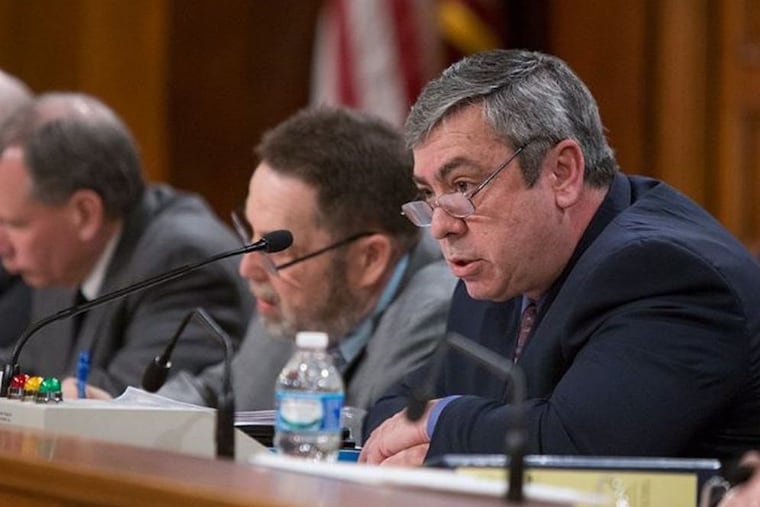Pa. is the Rust Belt of higher education | Editorial
Leaders need to see there is a connection between the education funding shortfall and Pennsylvania’s rather dismal job growth and sluggish economic performance.

Not only is our economy increasingly reliant on technology, but economists have noted we are now experiencing a “fourth industrial revolution” that encompasses artificial intelligence, robotics, quantum computing, and advanced telecommunications.
But don’t worry. Pennsylvania’s elected leaders don’t think college is all that important. The nice ethane cracker plant they’ve invested in has plenty of jobs that don’t require college educations.
The Inquirer recently reported on the state’s dismal record of support for higher education, tracking a decline in enrollment at public colleges and universities — including 14 state-owned schools — that has its roots, not surprisingly, in an ongoing decline in funding for higher education.
As of last year, that support was half of what it was back in 2000, when funding peaked at $9,443 per student. In 2018, funding was $4,552 per student, placing Pennsylvania among the bottom of states for percentage of tax revenues allocated to higher education. We are, indeed, the Rust Belt of education.
Lack of state support drives up tuition costs, and those higher tuitions drive students to out-of-state schools — where they often relocate after graduation, creating a brain drain for the state. More critically, higher tuitions also drive up student debt for those who do study here. According to the Institute for College Access & Success, Pennsylvania is second only to Connecticut in student debt. Pennsylvania students carry an average amount of over $37,000 in debt.
That’s bad news for students who start their working lives burdened by crushing debt, but also bad for their communities: that’s a lot of purchasing power being sucked out of local economies.
This is not a new situation; funding has not been robust for a long time, though former Gov. Tom Corbett made it even worse with devastating cuts to higher education.
The higher education problem is not just one of funding but a structural one, too: Pennsylvania’s higher education system is fragmented, so many schools fight for money individually rather than as a consolidated force.
State Sen. Pat Browne is chairing a higher education funding committee to investigate the possibilities. Experts say creating a larger plan for what the state wants to accomplish from its higher education is a priority. Many fear that the state’s solution will instead include closing institutions — which could also have a devastating impact on the communities where they are located.
Leaders need to see there is a connection between the funding shortfall and Pennsylvania’s rather dismal job growth and sluggish economic performance. The two are inextricably linked. Corporations consider college attainment rates among factors when choosing locations for start-ups or expansions. That signals an opportunity for the corporate community to put pressure on leaders to make this a priority.
(Meanwhile, Gov. Tom Wolf holds an advanced degree, which should make him a natural champion for the cause.)
The state found $1.65 billion in tax credits to invest in the Shell cracker plant. To be fair, many jobs there require college degrees. But as an investment strategy, it’s backward: create a large pool of educated people and we won’t need to give grants and tax credits to entice companies to locate here.
Editor’s Note: This editorial was upddated to correct an initial reference to a methane cracker plant. The Shell plant is an ethane plant.